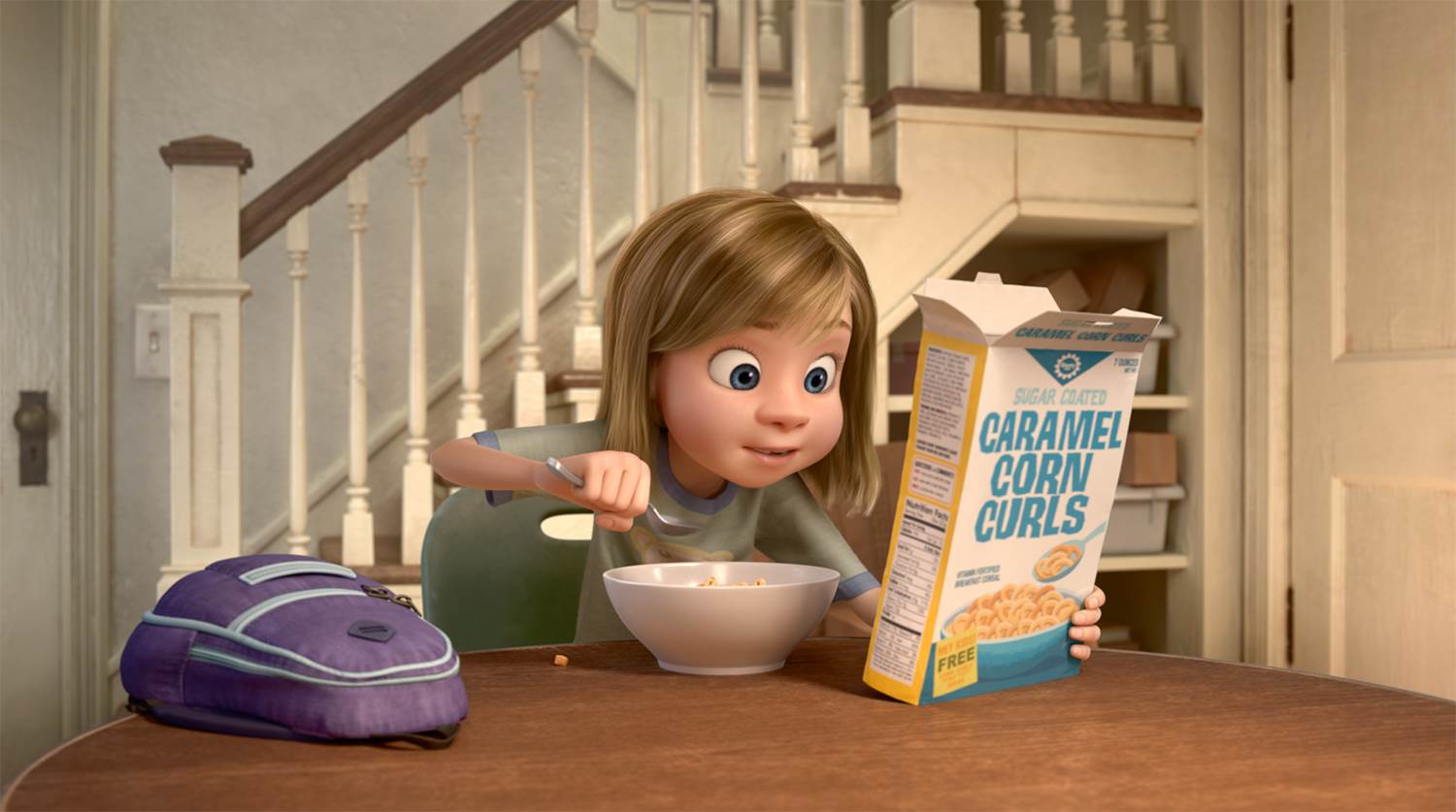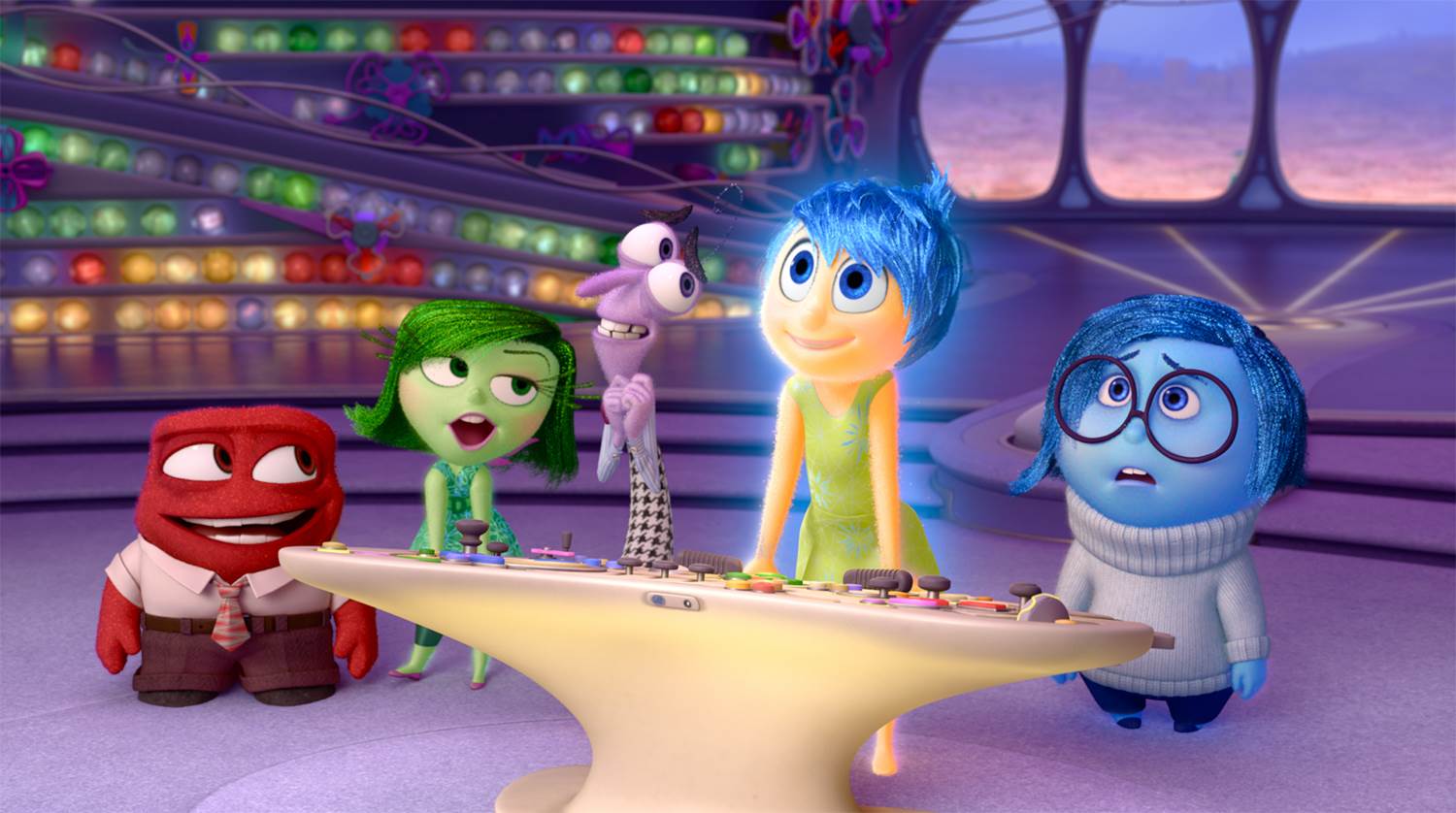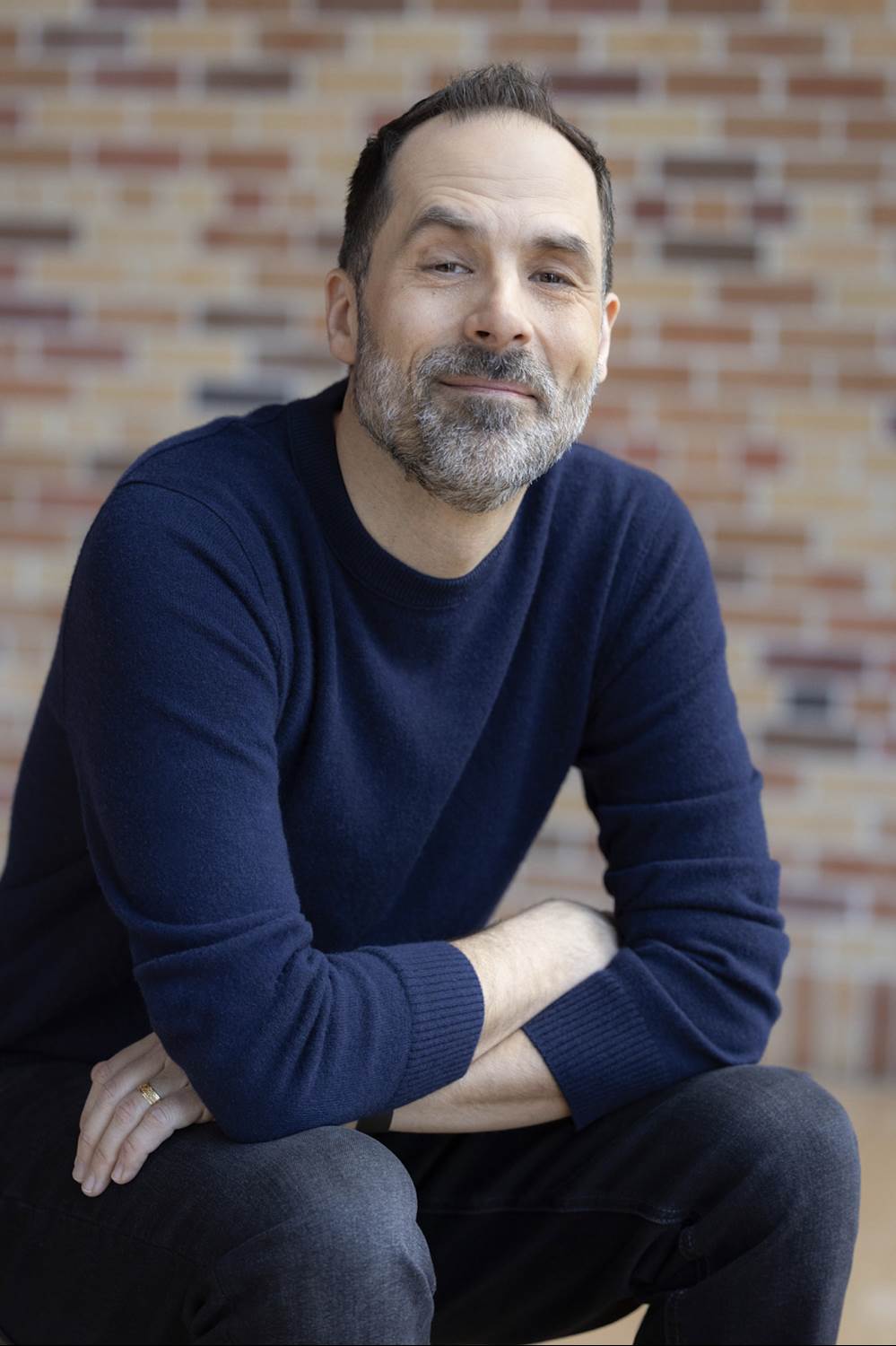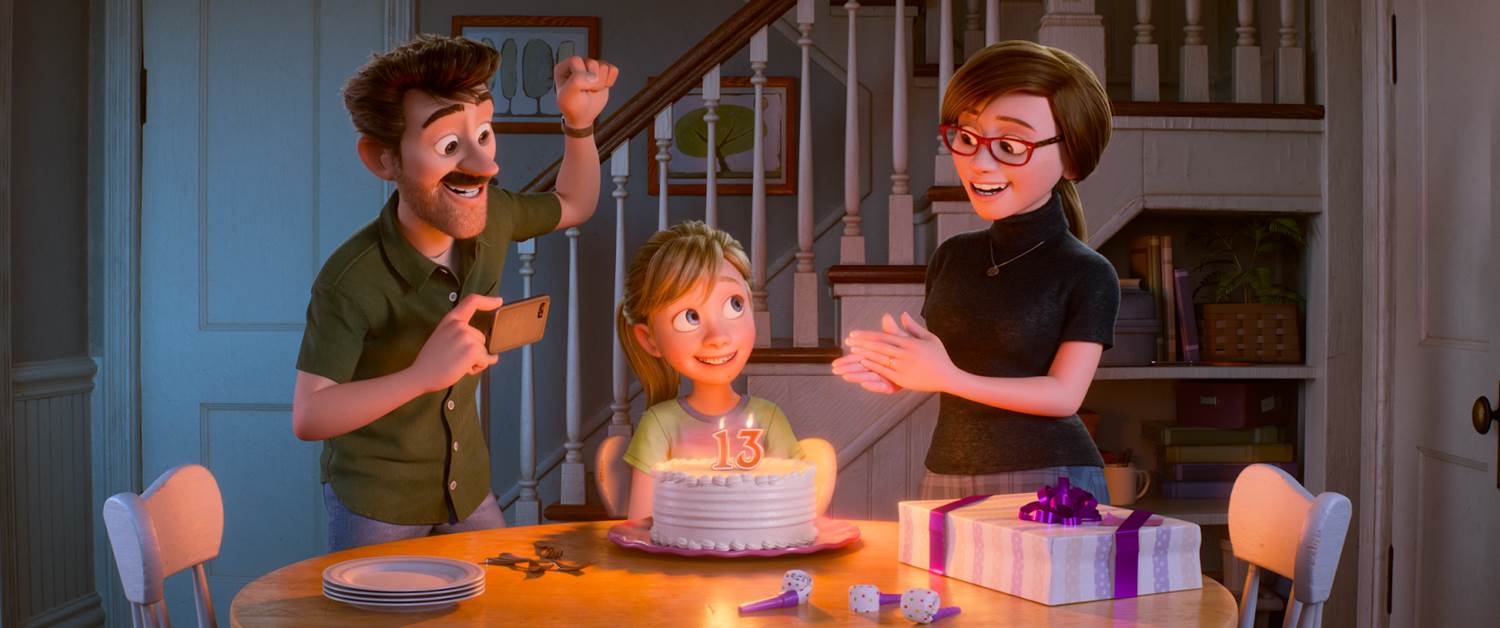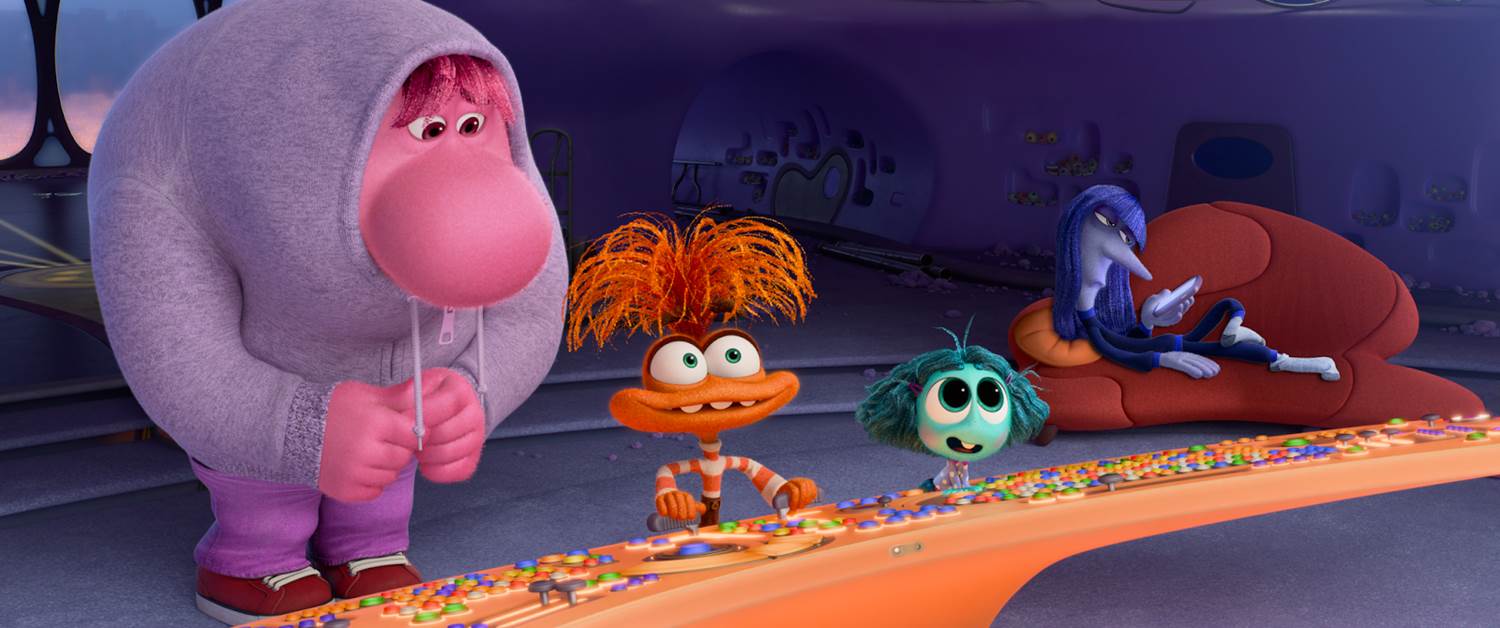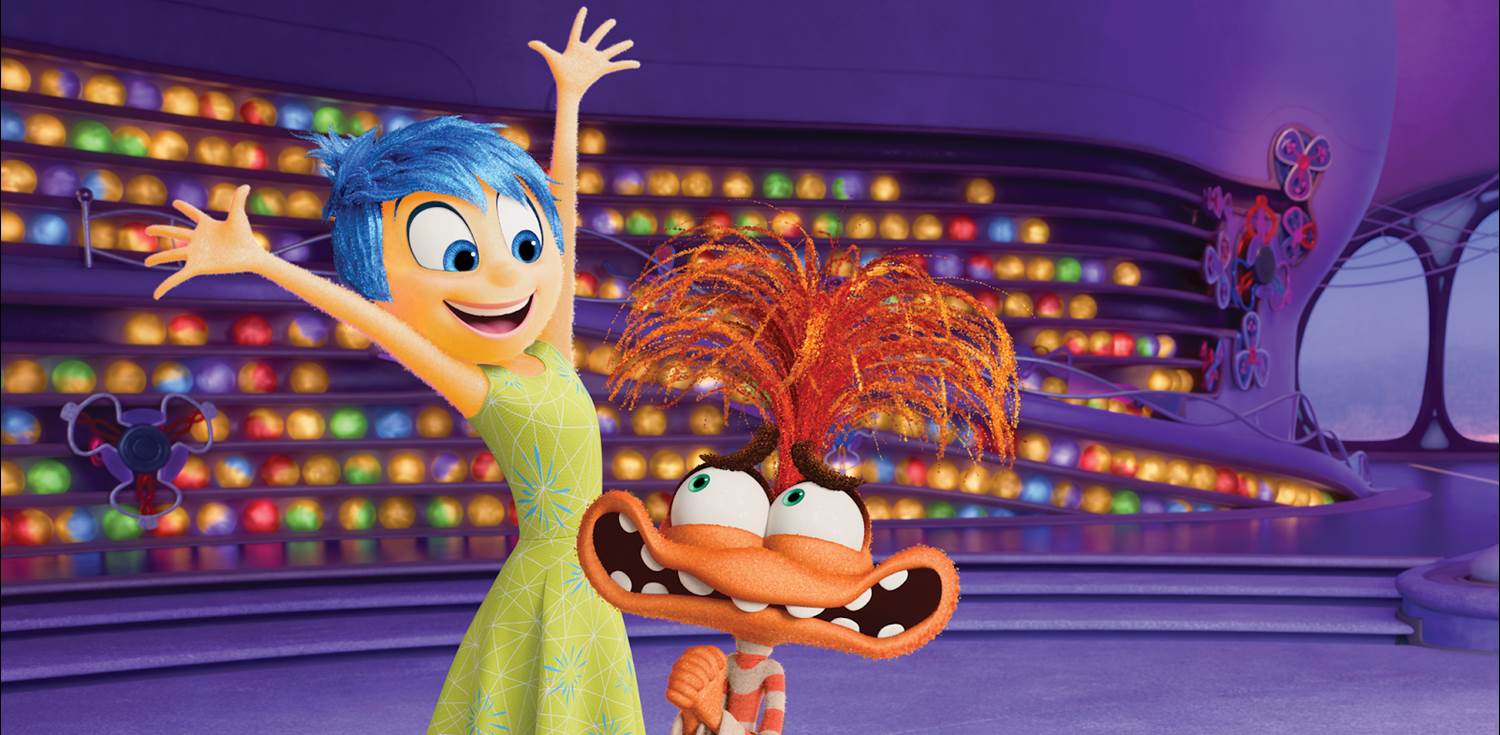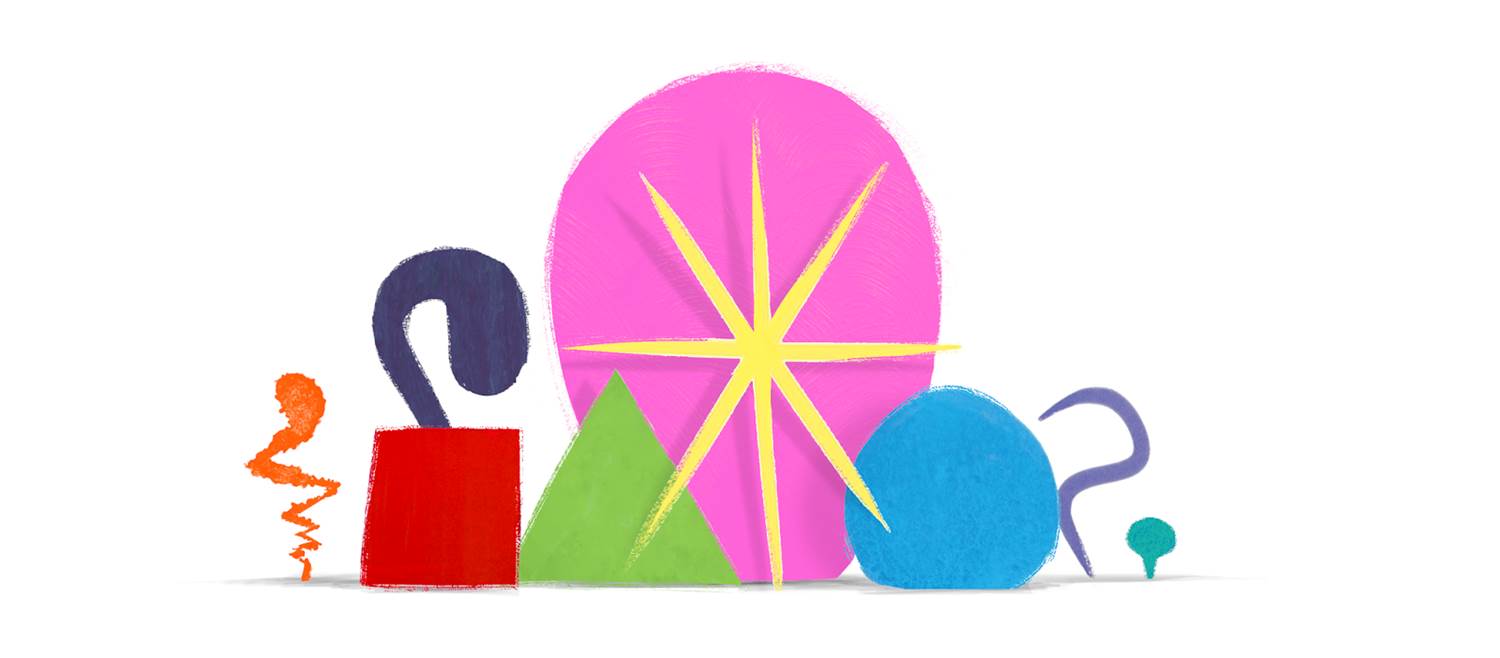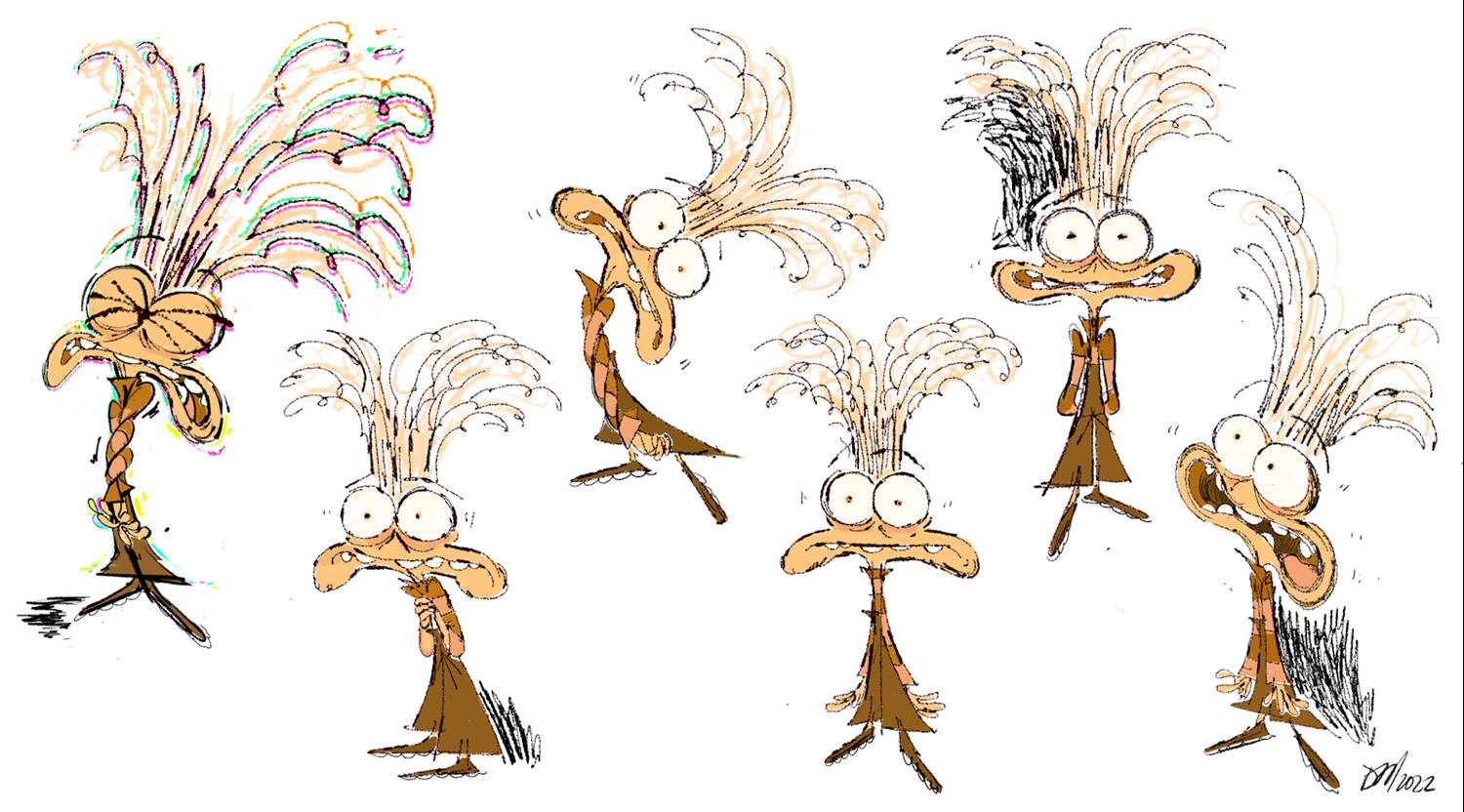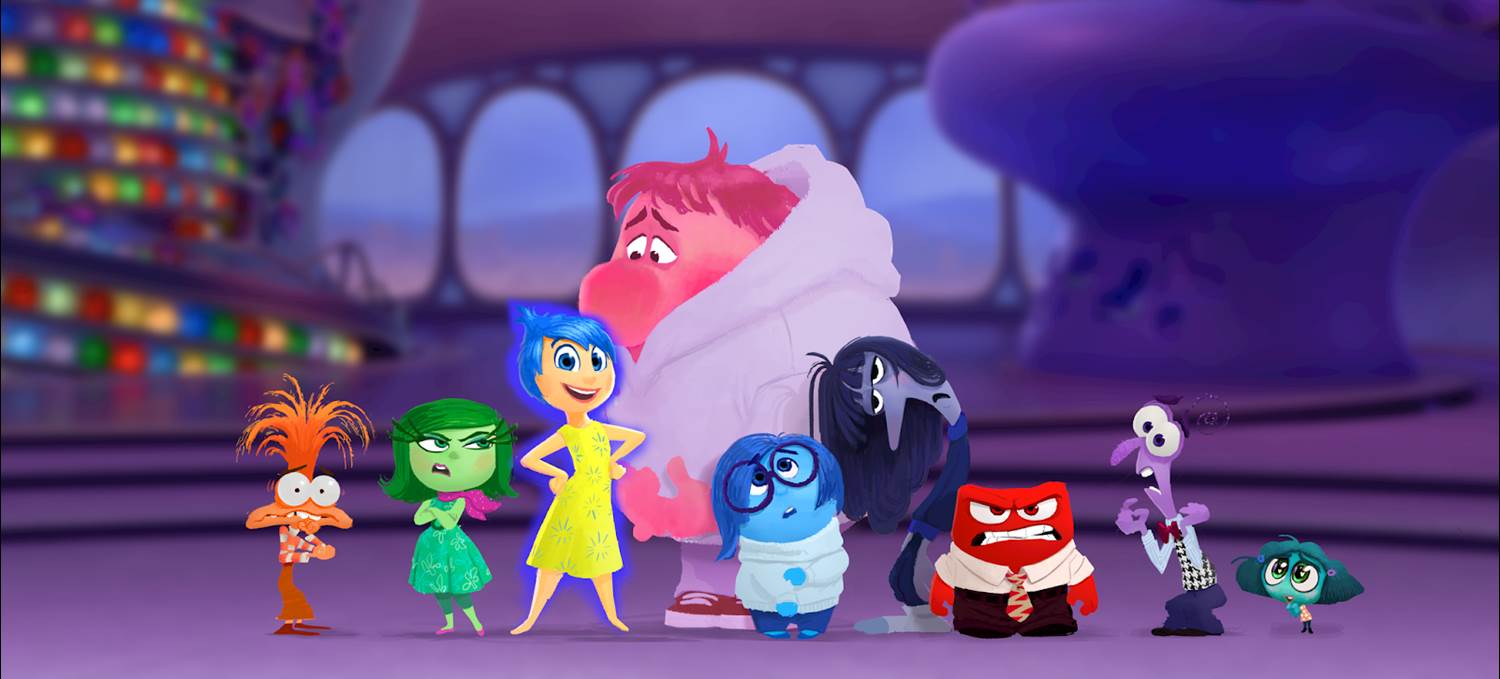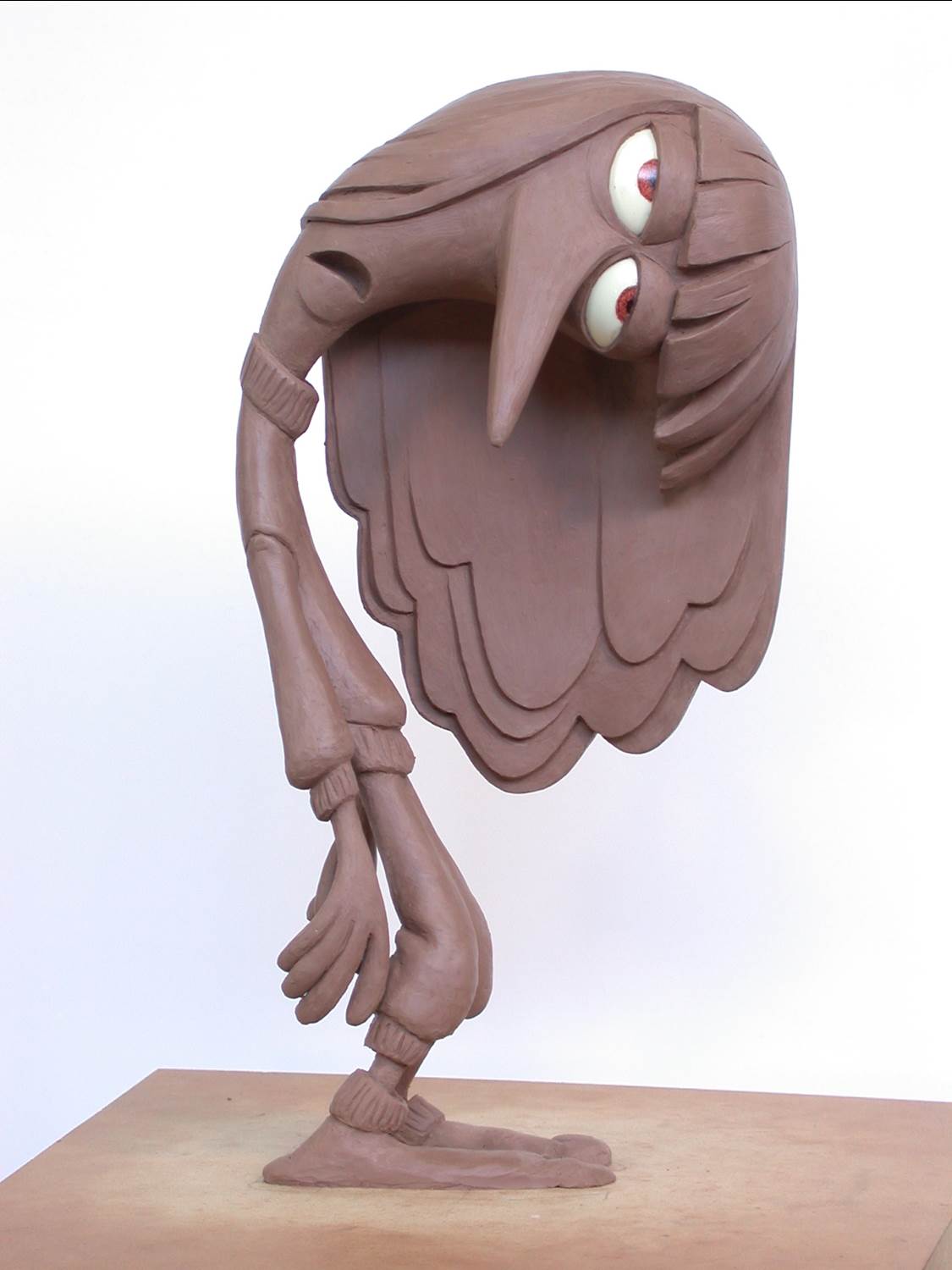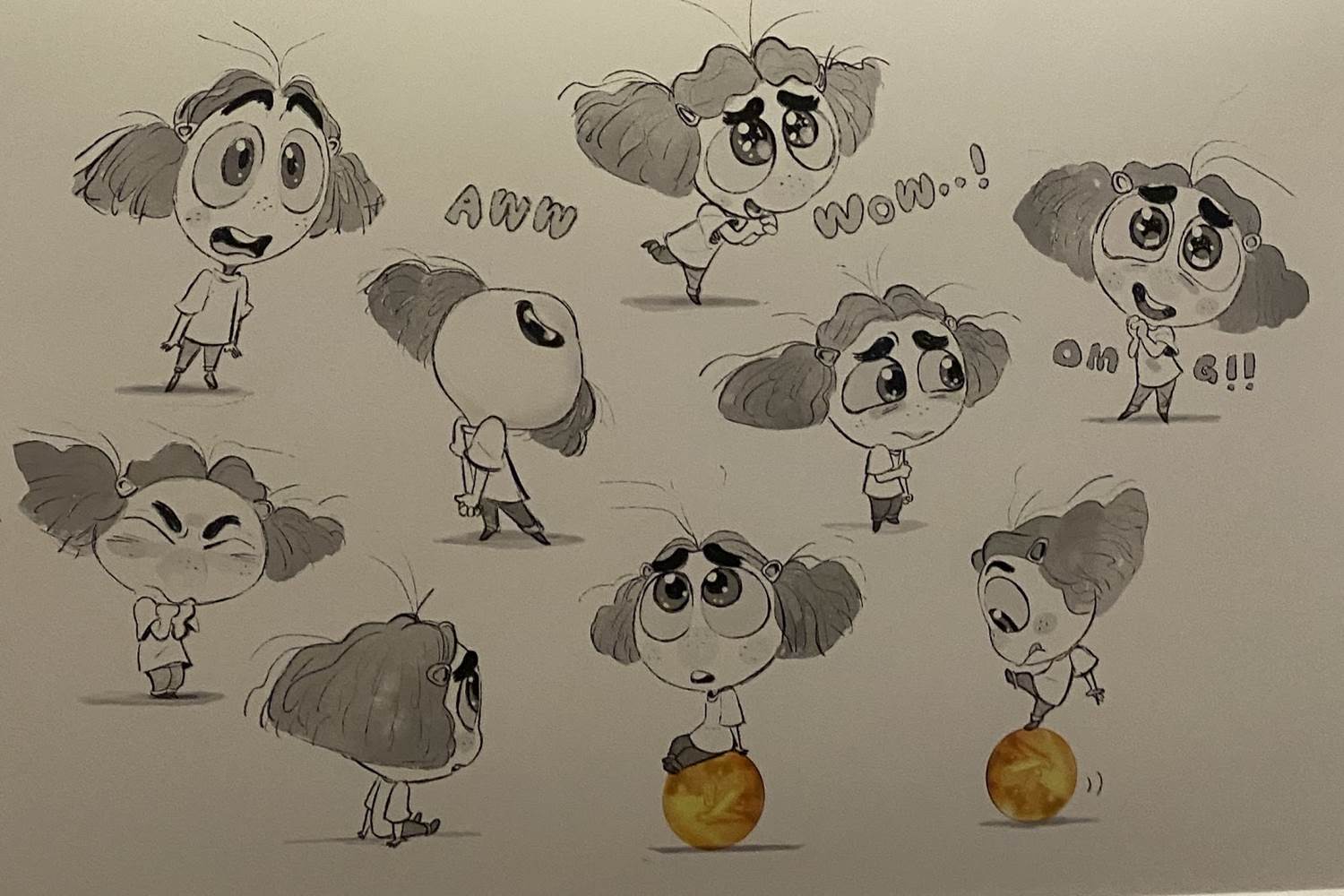Pixar Animation Studio’s Inside Out 2 revisits characters who made feelings famous back in 2015’s Inside Out. In the original film we follow Riley, who is uprooted from her Midwest life when her father starts a new job in San Francisco. Like all of us, Riley is guided by her emotions – Joy, Fear, Anger, Disgust and Sadness.
The emotions live in Headquarters, the control center inside Riley’s mind, where they help advise her through everyday life. As Riley and her emotions struggle to adjust to a new life in San Francisco, turmoil ensues in Headquarters. Although Joy, Riley’s main and most important emotion, tries to keep things positive, the emotions conflict on how best to navigate a new city, house and school.
The original Inside Out garnered universal acclaim from critics, and a huge audience reaction who loved all of the emotions in the insanely creative and original story. The movie raked in nearly $859 million in the worldwide box office, and spawned a short from the studio, Riley’s First Date. Despite the success and acclaim of Inside Out, it caught many fans off-guard when there was a surprise announcement at the D23 Expo in 2022 – Inside Out 2 was on its way.
According to executive producer Jonas Rivera, who produced the first film, creating any sequel conjures a vast array of emotions for filmmakers. “I remember going into a screening room for Toy Story 4,” he says. “Seeing Woody in an animation test gave me this feeling of reconnecting with family—he’s like an old friend. The idea of seeing Riley again and getting back to Headquarters with Joy, Sadness, Anger and everybody was like a fun family reunion.
“At the same time,” Rivera continues, “when you make a sequel, you know the audience will come to the theater with their own expectations because they’re familiar with the characters. That’s like a giant opportunity for us to deliver something that surprises people.”
Producer Mark Nielsen, who served as associate producer for the original Inside Out says he thinks that film resonated with audiences because it was so relatable. “Personifying how we feel was such a rich thing to explore—not only for the entertainment potential in it, but because it’s something every human can connect with,” he says. “We realized that the first film really sets up the next era of Riley’s life.”
Tapped to helm Inside Out 2 is director Kelsey Mann, who was able to approach the challenge from two points of view. “I have two kids—they’re 16 and 15—so I’m smack dab in the middle of it,” he says. “But I really zeroed in on the idea of Riley being a teenager because that was a hard time in my own life.”
One thing Mann did was look at his own childhood photos, taking note of himself on his birthday throughout various stages in life. He focused on a photo of himself at age 5 on his birthday, with a big grin ear to ear and a cake in front of him on a day that was meant to celebrate him. Mann then showed off a photo from his 13th birthday. No smile, wanting to be the furthest thing from the center of attention on his own birthday – a day meant for him – and only wanting to hide.
Going back to the new movie, Mann continued, “The first film did a lot of good in this world—giving people a new way to talk about their feelings, and if we can do something like that for teenagers around the world, then sign me up—I want to be part of that.”
Director Kelsey Mann is a great choice to bring us back to Headquarters. First coming to Pixar Animation Studios in 2009, he was the story supervisor on the 2013 feature film Monsters University. In this capacity, he oversaw a team of 5-8 story artists through the process of storyboarding the film. Mann also contributed ancillary material during the production of the Academy Award-winning feature Toy Story 3, and was tapped to direct the Monsters University short film Party Central, and as the story supervisor on The Good Dinosaur and Onward.
In Inside Out 2, audiences will be privy to a renovation of sorts in Riley’s mind when a construction team shows up to make way for new Emotions. The idea of Riley entering adolescence provided filmmakers with the perfect canvas. “We met with experts,” says Producer Nielsen. “We read a lot of books and spoke with psychologists about what happens to the teenage brain—the expansion of their minds at that time. It became clear pretty quickly that there would be a lot of potential for entertainment with a new group of Emotions coming in and disrupting the core five that have just hit their stride in figuring out how to work together.”
“There are definitely more complex Emotions that come with being a teenager,” Nielsen continues. “Anxiety has been a part of our story from the beginning, but the impact the last few years have had on all of us—especially teens—it seems like it’s the right time in history to be talking about it.”
Fans need not be discouraged. Riley’s core Emotions are back. Lending their voices to Joy, Sadness, Anger, Fear and Disgust, respectively, are Amy Poehler, Phyllis Smith, Lewis Black, Tony Hale and Liza Lapira. But now that Riley’s a teenager, there are new Emotions and a voice cast tapped to bring them to life, including Maya Hawke as Anxiety, Ayo Edebiri as Envy, Adèle Exarchopoulos as Ennui, and Paul Walter Hauser as Embarrassment.
Additionally, Kensington Tallman lends her voice to Riley Andersen, who’s about to begin high school. Lilimar was called on to voice Valentina “Val” Ortiz, a high school hockey player who everyone, including Riley and her friends, looks up to.
Diane Lane and Kyle MacLachlan return to voice Riley’s mom and dad; Sumayyah Nuriddin-Green and Grace Lu provide the voices for Riley’s besties; and Yvette Nicole Brown voices Coach Roberts, who heads up a summer hockey camp. The voice cast also includes Sarayu Blue, Flea, Ron Funches, Dave Goelz, James Austin Johnson, Bobby Moynihan, Frank Oz, Paula Pell, Paula Poundstone, John Ratzenberger, Kendall Coyne Schofield, June Squibb, Kirk Thatcher and Yong Yea.
A recent visit to Pixar Animation Studios afforded us a closer look at the character design with Jason Deamer, production designer on Inside Out 2. The late Ralph Eggleston, along with a number of other Pixar classics, served as production designer on the original film, but his passing allowed Deamer to step up and honor his mentor in the same role for the sequel.
At Pixar Animation Studios since 1998, when he was a sketch artist on Monsters, Inc. Deamer has worked as a character designer and art director on a number of Pixar films including Academy Award-winning Finding Nemo, Ratatouille, WALL•E, Brave and Soul, as well as the short films One Man Band, Lifted and the Academy Award-winning short film Bao. He also worked as the production designer on the Academy Award-winning short film Piper. As a production designer, Deamer leads a small team of artists who collaborate with the director and entire production crew to conceptualize and create a myriad of characters, environments, colors, and lighting, which help bring the film’s story to life.
While visiting with him at the studio, he shared a special look at the new Emotions with us, and a look at the character’s shape language, keeping the look and feel of the original five emotions with the new four to blend in seamlessly.
In the original (and the same is true for Inside Out 2), Joy is yellow, with a shape like a star. Always bursting with energy, arms outstretched in excitement. Anger is red with a solid rectangular shape with sharp corners and an immovable blocky feel. Sadness is blue, and shaped like a teardrop. Fear is purple, and curvy with soft edges for that cowering nerve. Disgust is green, with sharp acute angles outward.
As for the new emotions, “I wanted to make sure that we honored the visual canon of the first film when we revisited the world of Inside Out for this second film, “ Deamer said, before describing the looks of the new emotions.
Described by Deamer, “Anxiety is orange with electric shape language – tense and shaky. You always see the whites of her eyes and her feather-like hair betrays her constant movements.”
A bundle of frazzled energy, Anxiety enthusiastically ensures Riley’s prepared for every possible negative outcome. Protecting the new teen from the dangers she can’t see, Anxiety is determined to make sure Riley fits in with her high school peers at all costs. Armed with meticulously organized lists and plans to make sure Riley never makes a mistake, Anxiety thinks ten steps ahead and isn’t shy about sharing worst-case scenarios. Anxiety knows she’s a lot to deal with, but feels pushing Riley toward perfection means being that much closer to achieving her goals.
Anxiety plays a big role when it comes to Riley’s social game. Says Mann, “In an attempt to make sure that Riley is safe, protected and ultimately accepted by others, Anxiety pushes Riley to change. I think a lot of teenagers do that—I know I did. We shift who we are, morph a little in order to gain that acceptance. But should we have to change who we are in order to be liked?”
Story supervisor McKenna Harris insists, however, that even if Anxiety serves as the antagonist, she’s not the enemy. “From the beginning there was always this strong sense of wishing to tackle that battle against perfectionism that a lot of young girls face—that we all face,” Harris says. “We felt that anxiety can’t be all bad—it serves a purpose in our lives — so we treat Anxiety with empathy and compassion in our story to make sure that the character isn't a classic film villain. She's someone who wants the best for Riley.”
Maya Hawke lends her voice to Anxiety.
Described by Deamer, “Embarrassment is pink like blush with a soft and round shape to evoke his reticence and timidness. He’s a gentle giant, and unfortunately for him, he wants to hide but he’s hard to miss.”
Shy and decidedly quiet, Embarrassment is ready to flop onto the Headquarters console at the first sight of social awkwardness. Embarrassment is quiet to be sure and uses his hoodie as a built-in hiding place.
According to Story Supervisor John Hoffman, the largest Emotion may be shy, but he packs a punch. “Embarrassment is often an exclamation point to interactions Riley has with other characters,” he says. “But he really comes to life when his relationship with Sadness takes off. She really sees Embarrassment. There’s a kinship. Embarrassment is a very sensitive character and kind of an outsider like Sadness was in the first film.”
The award winning Paul Walter Hauser was tapped to voice Embarrassment.
Described by Deamer, “Ennui has the posture of a limp noodle. She’s rarely interested enough to lift her own head.”
Bored and lethargic with a well-practiced eye-roll, Ennui adds the perfect amount of teenage apathy to Riley’s personality, when she feels like it. The best part? She doesn’t even have to get up off the couch—Ennui can work the console remotely using her mobile app.
According to Hoffman, Ennui will feel all too familiar. “It’s that every-teen feeling that you don’t care or don’t want to deal,” he says. “I could relate when I was a teenager. Ennui has that droopy noodle posture and she’s committed to her technology.”
Writer Meg LeFauve points out that even though Ennui seems to be checked out, she’s there to help their girl by providing a protective mechanism that allows Riley to downshift from high drama to none at all. “Ennui also serves an important function by building a little distance between Riley and her parents,” says LeFauve. “I know that’s not fun if you’re the parent.”
Adèle Exarchopoulos lends her voice to Ennui.
Described by Deamer, “Envy is teal in color, and a smaller, sprouting-mushroom shape to juxtapose against the rest of the cast. Naturally, she wishes she were taller and less childlike.”
Envy may be small, but she sure knows what she wants. She’s perpetually jealous of everything everyone else has, and she’s not afraid to pine over it. Envy’s wishful thinking and fascination with the newest, coolest thing pulls her attention in all directions and longs for what Riley doesn’t have. Mann says Envy represents the “I wish” feeling that teens know all too well. “We really lean into social comparisons at this age,” he says. “So Envy being tiny comes from the idea that she would always be wishing she was as tall as everyone else.”
Adds producer Nielsen, “Dr. Dacher Keltner, who’s a professor at Berkeley, a psychologist and an author, was a great partner to us for the first film and we workshopped with him extensively: jealousy came up a lot and ended up becoming Envy because nobody really wanted to spend time with jealousy as a character.”
The Emmy-winning Ayo Edebiri voices the tiny Emotion.
“One of the things I appreciate the most about our studio is the willingness to evolve our films with the intent to make them the best they can possibly be,” says Deamer. And more about the Inside Out 2 stage of that evolution is on the way, as we’ve only scratched the surface of the fun of the new film. So far, we’ve only met the new emotions, and we haven’t even talked about some of the more inner workings of Headquarters and the Real World and Riley’s new friends! So tuned to LaughingPlace.com for more as we build up to the release of Inside Out 2 only in theaters on June 14th!
no obligation quote from MouseFanTravel.com

